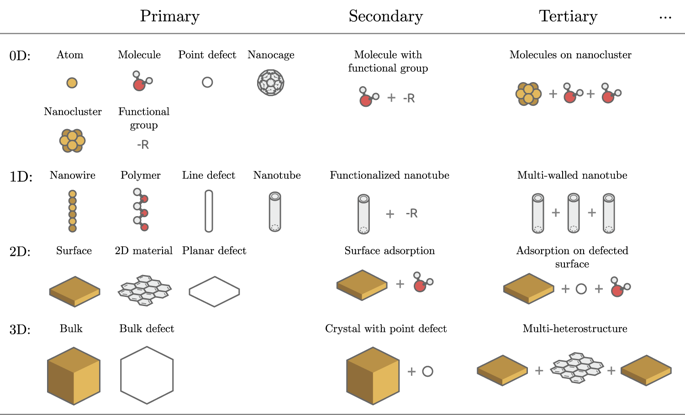npj Computational Materials ( IF 9.4 ) Pub Date : 2018-09-11 , DOI: 10.1038/s41524-018-0107-6 Lauri Himanen , Patrick Rinke , Adam Stuart Foster

|
Automated and verifiable structural classification for atomistic structures is becoming necessary to cope with the vast amount of information stored in various computational materials databases. Here we present a general recursive scheme for the structural classification of atomistic systems and introduce a structural materials map that can be used to organize the materials structure genealogy. We also introduce our implementation for the automatic classification of two-dimensional structures, especially focusing on surfaces and 2D materials. This classification procedure can automatically determine the dimensionality of a structure, further categorize the structure as a surface or a 2D material, return the underlying unit cell and also identify the outlier atoms, such as adsorbates. The classification scheme does not require explicit search patterns and works even in the presence of defects and dislocations. The classification is tested on a wide variety of atomistic structures and provides a high-accuracy determination for all of the returned structural properties. A software implementation of the classification algorithm is freely available with an open-source license.
中文翻译:

表面和2D材料的材料结构谱系和高通量拓扑分类
为了应对存储在各种计算材料数据库中的大量信息,对原子结构进行自动且可验证的结构分类变得十分必要。在这里,我们为原子系统的结构分类提供了一种通用的递归方案,并介绍了可用于组织材料结构谱系的结构材料图。我们还介绍了二维结构自动分类的实现,尤其是针对曲面和2D材料。该分类过程可以自动确定结构的尺寸,将结构进一步分类为表面或2D材料,返回下面的晶胞,还可以识别异常原子,例如被吸附物。分类方案不需要显式的搜索模式,即使在存在缺陷和错位的情况下也可以工作。该分类在各种各样的原子结构上进行了测试,并为所有返回的结构特性提供了高精度的确定。分类算法的软件实现可通过开源许可证免费获得。











































 京公网安备 11010802027423号
京公网安备 11010802027423号